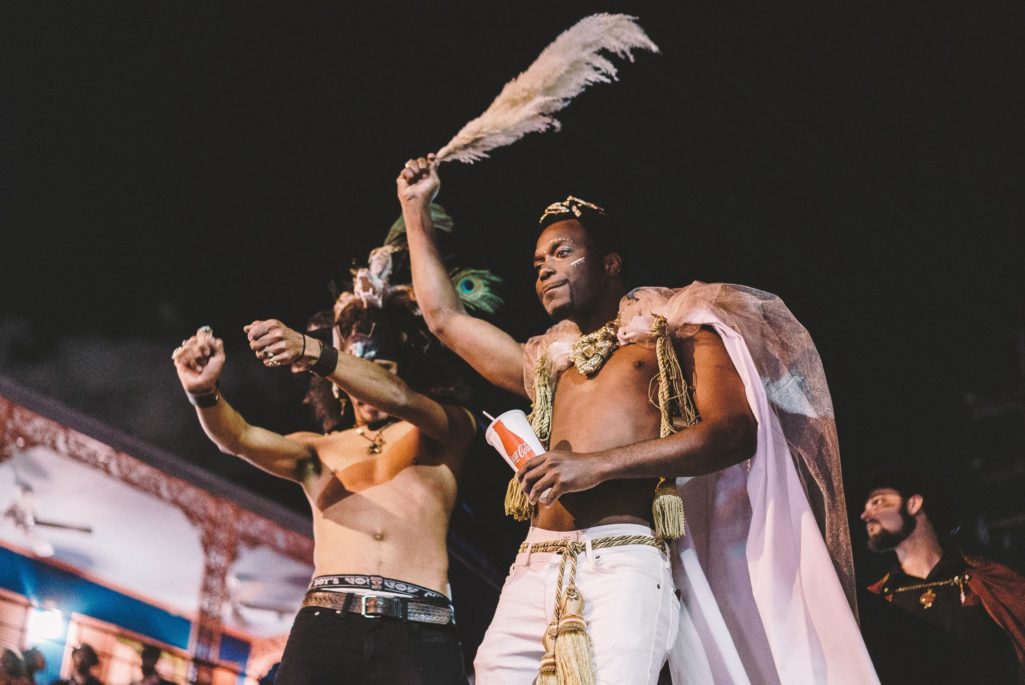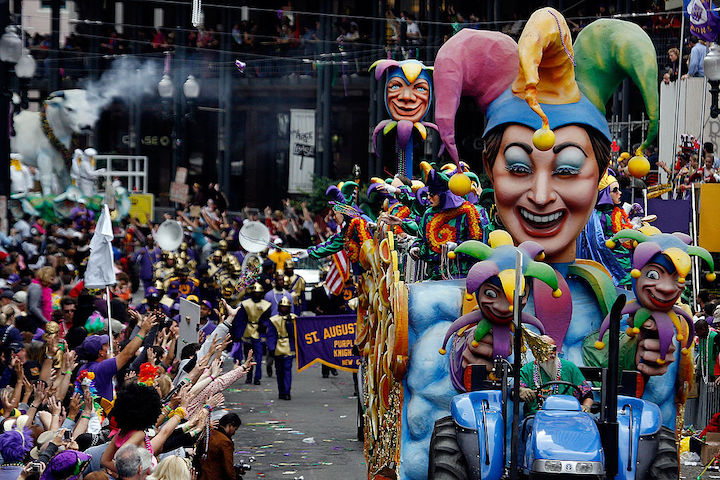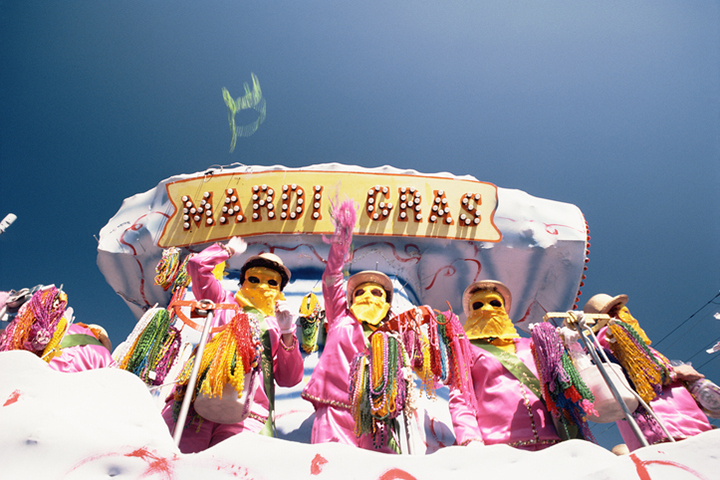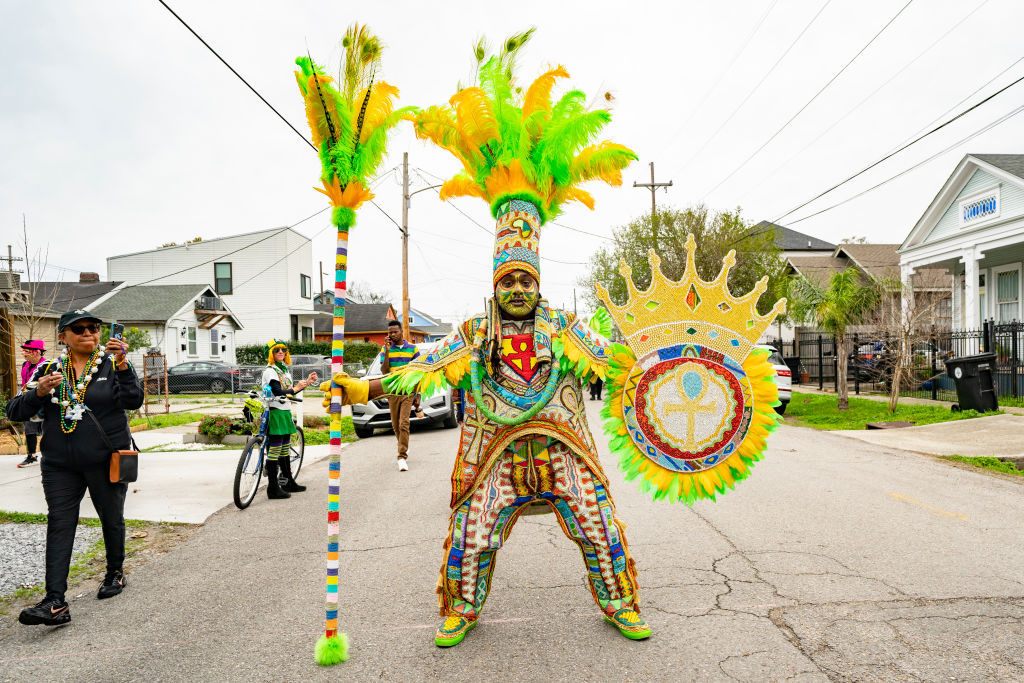Let’s call it a comeback, as 2022 marks the first in-person Carnival and Mardi Gras for New Orleans after the pandemic canceled all the events last year.
“Without a doubt, we will have Mardi Gras 2022,” New Orleans Mayor LaToya Cantrell promised during a news conference at the city’s annual King’s Day celebration event.
The mayor went on to explain that there will be some changes this year despite the in-person experience, including different parade routes. It’s been a while since the last in-person experience, which is why we created this guide to New Orleans’ 2022 festival season.
Here’s what to know:
1. It's Not Just About Mardi Gras. It's Carnival Season

When people hear New Orleans, they automatically think of Mardi Gras, which translates to Fat Tuesday in French.
Mardi Gras is inarguably the most iconic event in the Big Easy. It’s a day when you see people decked out in feathers, sequins, glitter, gold, or purple. It feels like a block party where people are dancing and drinking in the streets, catching beads and other trinkets from the krewes in parades, or you find spectators marveling at the Mardi Gras Indians.
What many people don’t know is this time of year is not just about Mardi Gras, but Carnival as well.
Similar to celebrations in Rio de Janeiro, New Orleans has a carnival season, which organizers say refers to the period of feasting and fun commencing on January 6 and ending on Mardi Gras – the final day of revelry before Ash Wednesday when the Christian Lent season begins.
Locals call everything leading up to Mardi Gras “Carnival Season;” the last two weekends leading up to Fat Tuesday are called “Mardi Gras;” and Fat Tuesday is “Mardi Gras Day.”
2. Joan of Arc Parade Kicks Off Carnival Season
View this post on Instagram
When people who celebrate Christmas are winding down from the holiday season, New Orleans is just getting started. The final day of Christmas in New Orleans is recognized as Twelfth Night – the first day of the Carnival Season.
It doesn’t matter what day Mardi Gras falls in a particular year, Twelfth Night or “The Feast of Epiphany” falls on Jan. 6 in NOLA.
Christmas trees turn into “Carnival Trees” and there are secret balls, parades, and other celebrations over the next several weeks leading up to Mardi Gras.
In New Orleans, the city observes the start of the festive season with the Joan of Arc Parade that marches through the French Quarter.
The parade is followed by the Twelfth Night Masquerade Ball and the ride of the Phunny Phorty Phellows – a group of gentlemen who “board the St. Charles streetcar with great fanfare Uptown to herald the arrival of Carnival,” according to Mardi Gras New Orleans.
It’s officially Carnival season.
3. There Are Parades Weeks Before Fat Tuesday

There are a ton of parades by Krewes before Mardi Gras. If you’re not familiar, a krewe is a social organization in New Orleans that hosts a ball for the Carnival season, puts on a parade for Mardi Gras, as well as hosts social events throughout the year.
Some krewes are more exclusive than others to the point they don’t have an open invitation. The only way to get in some krewes is by sponsorship from a member.
Krewes date back to the early 1800s and throughout New Orleans Carnival season and Mardi Gras, these krewes host parades throughout the city.
One of the oldest traditionally African-American krewes in New Orleans is Zulu, which held its first parade in the early 1900s.
While every krewe and parade is unique, locals will tell you that Orpheus, Bacchus, and Endymion have the most extravagant and breathtaking floats.
Here’s a guide to 2022 parades, routes, and start times.
4. You Don't Need Tickets For Parades

Tickets are not needed for any of the parades, You only get tickets to sit down on the stands as the parade passes by. Ticket prices range from as low as $10 to $80.
Once you check the parade routes based on your interest, purchase tickets for the stands by clicking here.
5. Let's Talk About The Most Coveted Beads & Throws
View this post on Instagram
//www.instagram.com/embed.js
Now that you have the parade route settled, it’s important to note that the Mardi Gras beads and throws are taken seriously by locals.
New Orleanians collect them, and it’s not uncommon for you to talk in someone’s house and see a shrine of their throw collection over the years.
The krewes work year-round to custom the throws and trinkets.
If you can catch a Zulu Krewe decorated Coconut, a custom and coveted shoe from the women from the Muses Krewe, a high-tech throw from Krewe d’Etat, or the beautiful and unique sunglasses from Iris Krewe, you hit the Mardi Gras jackpot and deserve bragging rights for years to come.
6. Why Is There So Much Purple, Gold, and Green?
View this post on Instagram
If you’re cruising down New Orleans, you will lose count of how many times you see the colors purple, gold, and green.
But the origins are a little mystifying.
The Krewe of Rex was founded in 1872 and is one of the oldest participating groups in Mardi Gras. Historians say the krewe was formed right after the Civil War as a way to lure more tourists and businesses to the city.
Rex has held more parades than any other organization and is known as the “King of Carnival.”
Rex is believed to have started the many traditions we still see in Mardi Gras today, including the colors purple, green, and gold.
Purple is said to represent justice, green represents faith and gold represents power.
If you’re not in costume, you want to wear these colors to get more beads.
7. Yes. You Want To Get A Slice Of King Cake
View this post on Instagram
Remember in the above post we told you about Twelfth Night or “The Feast of Epiphany?”
Well, it’s also known as Three Kings Day. For Christians, it’s a day that commemorates the story in the Bible of the three kings who followed the star of Bethlehem to bring gifts to the baby Jesus. This marks the 12th day of Christmas.
King cake comes from this biblical story. The cake is like a cinnamon roll with icing usually colored (yes, you guessed it) in yellow, green, and purple.
The cake typically comes with a baby plastic king baked inside. If you bite into this slice, it means wealth in the new year, typically because of your wealth, you have to host next year’s party.
If you don’t remember anything else, just eat the cake.
